We spent a few days in Central Otago, based in Alexandra, and easily found a variety of short walks in the area. By chance it seems that the theme of our walks was local mining and water diversion operations, although at the time we just picked things that looked interesting.
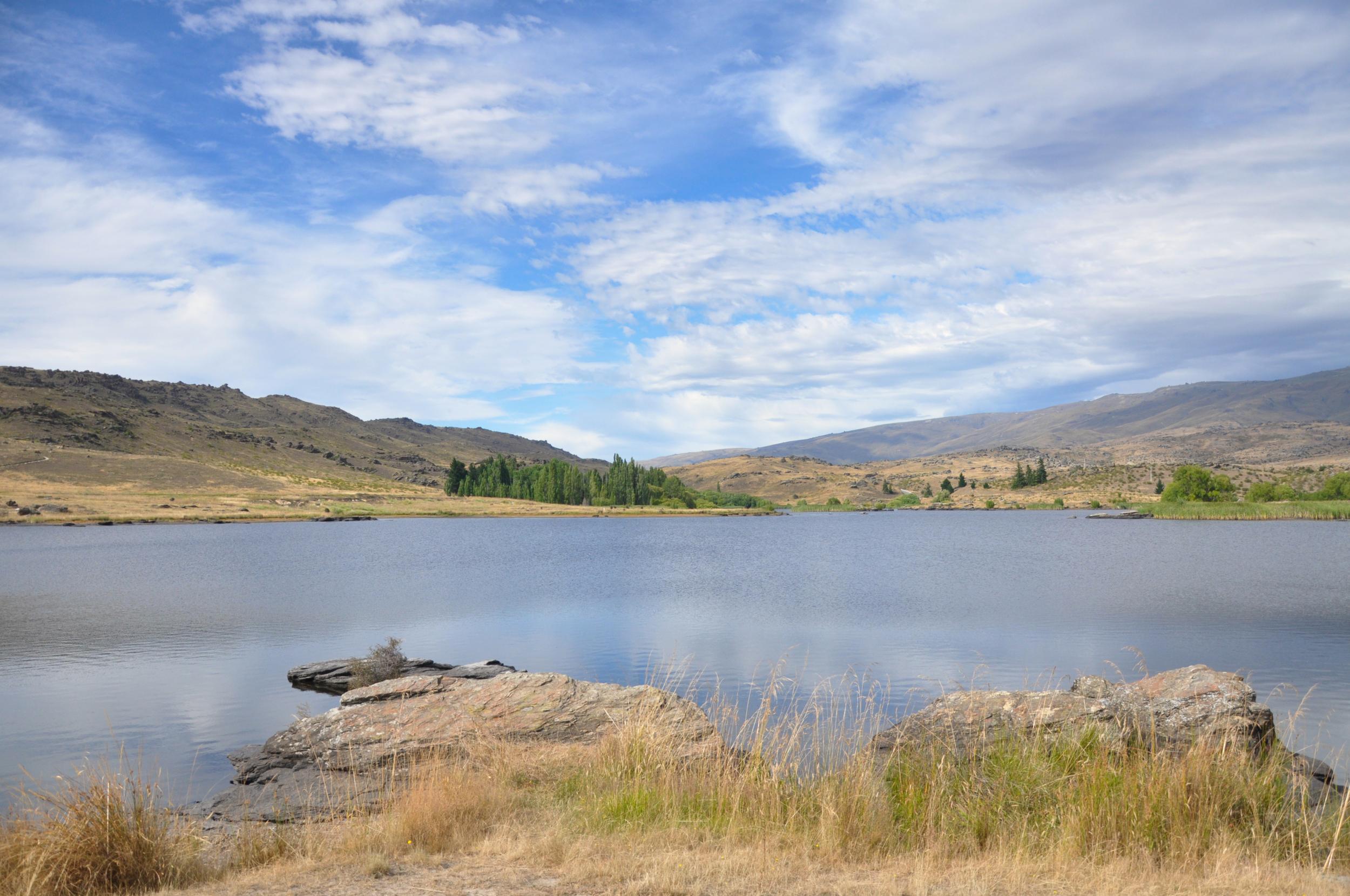
Our first walk took us to Flat Top Hill Conservation Area, an area of dry, short tussockland which is quite a rare ecosystem. The walk started at Butcher’s Dam which was constructed in the mid-1930s to provide water to the nearby town of Alexandra. The dam is still maintained today, although the water is only used for irrigation today. The walking track started by taking us across the top of the dam.
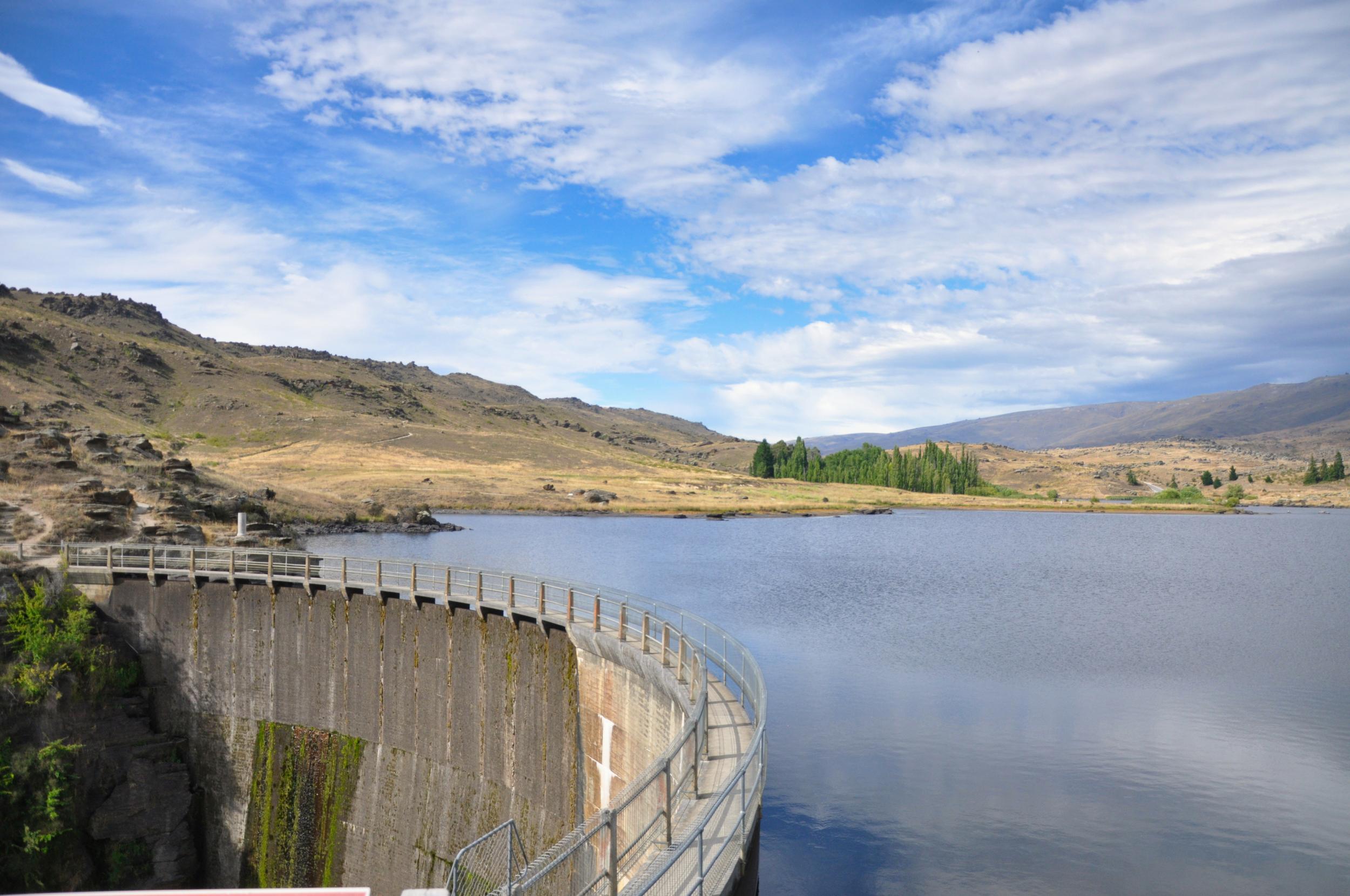
Before the Dam was constructed, the area was known as Butcher’s Gully with gold having been discovered here in 1862. A store a butchers shop was set up a couple of years later and with the completion of the nearby highway a hotel was built. Despite being burnt down and rebuilt in 1886, the hotel remained in operation until the valley was flooding following the completion of the dam. It is said that when lake levels are low enough it is possible to see the chimneystacks from the old building just below the surface of the reservoir.
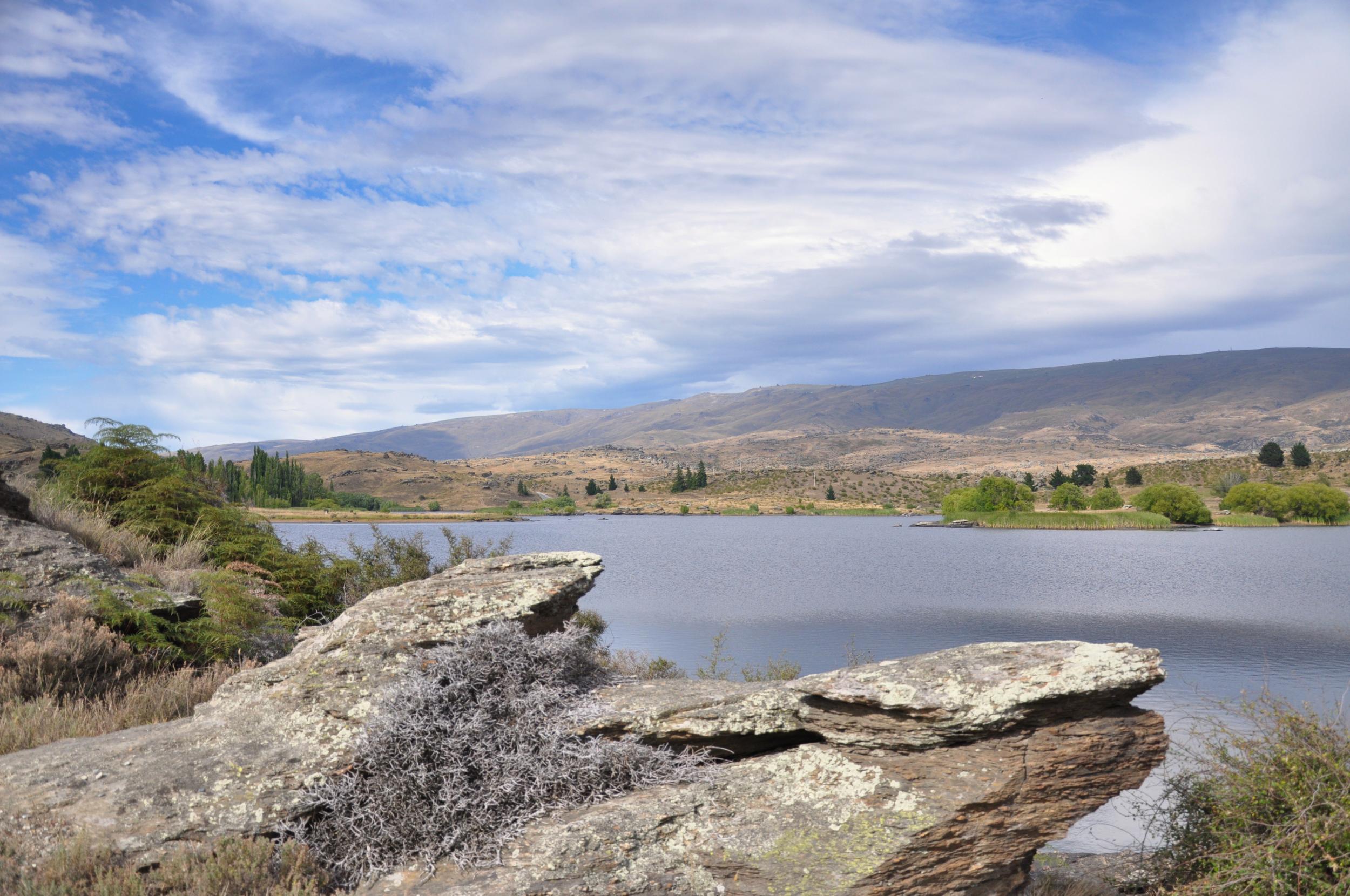
Water levels looked pretty high when we were there so there wasn’t much to see below the surface. Instead we started climbing up Flat Top Hill in the hopes of getting some views over the surrounding area.
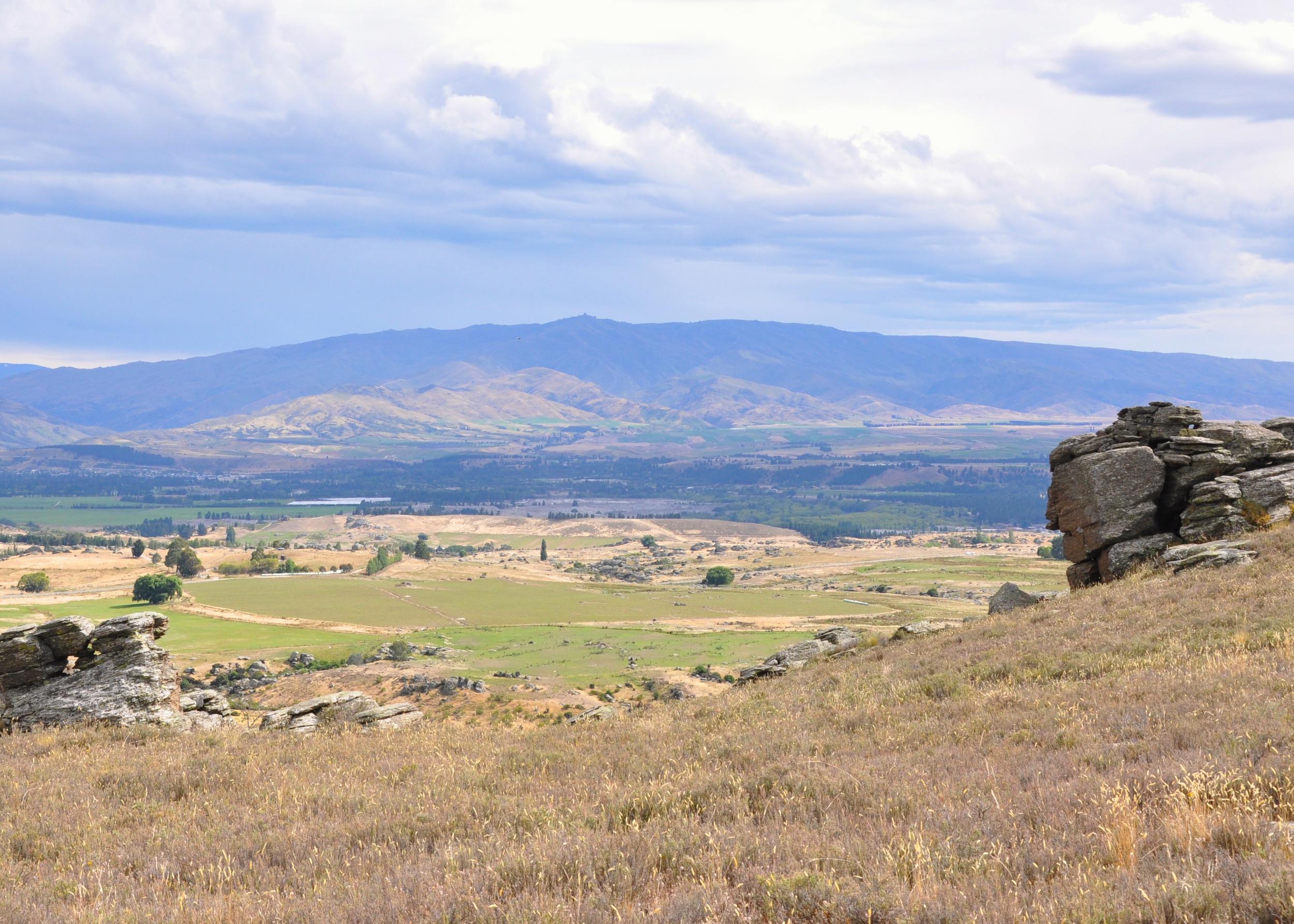
After a bit of a climb and short scramble we reached the top of Flat Top Hill from where we were rewarded with views all the way down to the Clutha River gorge.
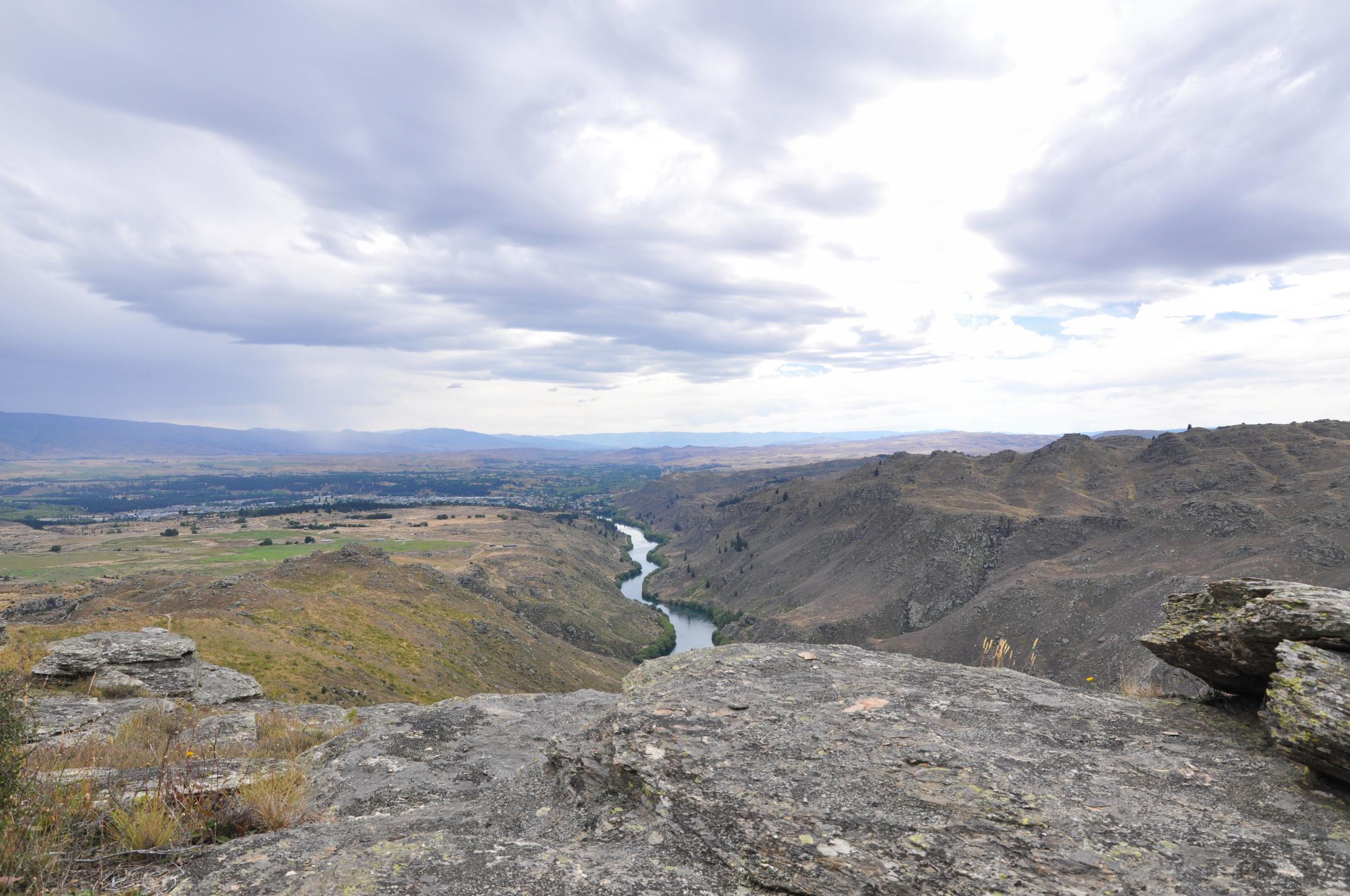
From our vantage point on the ridgeline, it was easy to pick out the Roxburgh Gorge Track below us. Sadly the track doesn’t quite continue the entire length of the gorge at the moment, but it is still a nice easy walk along the river which reminded me a lot of Colorado when I walked it a few years ago.

Our next walk took us to the Aldinga Conservation Area just a few kilometers away from Butchers Dam. Once again the hike started near a dam, Conroys Dam was built around the same time as Butchers Dam and is also still used for irrigation.
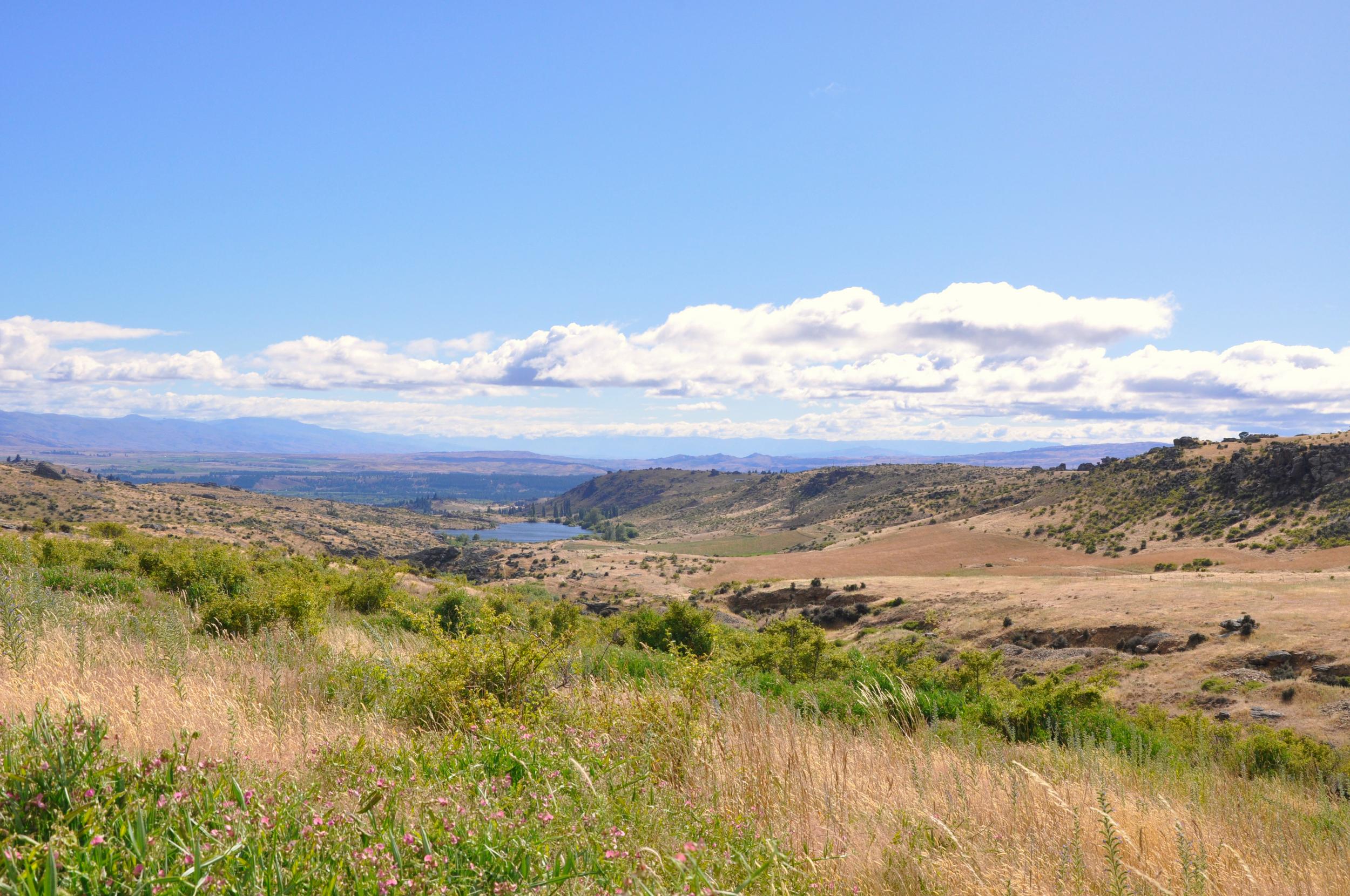
As we started the hike through the grasslands, we became aware of a large fence partway up the neighbouring hillside. Eventually the track looped around and we found ourselves up against a massive predator-proof fence.
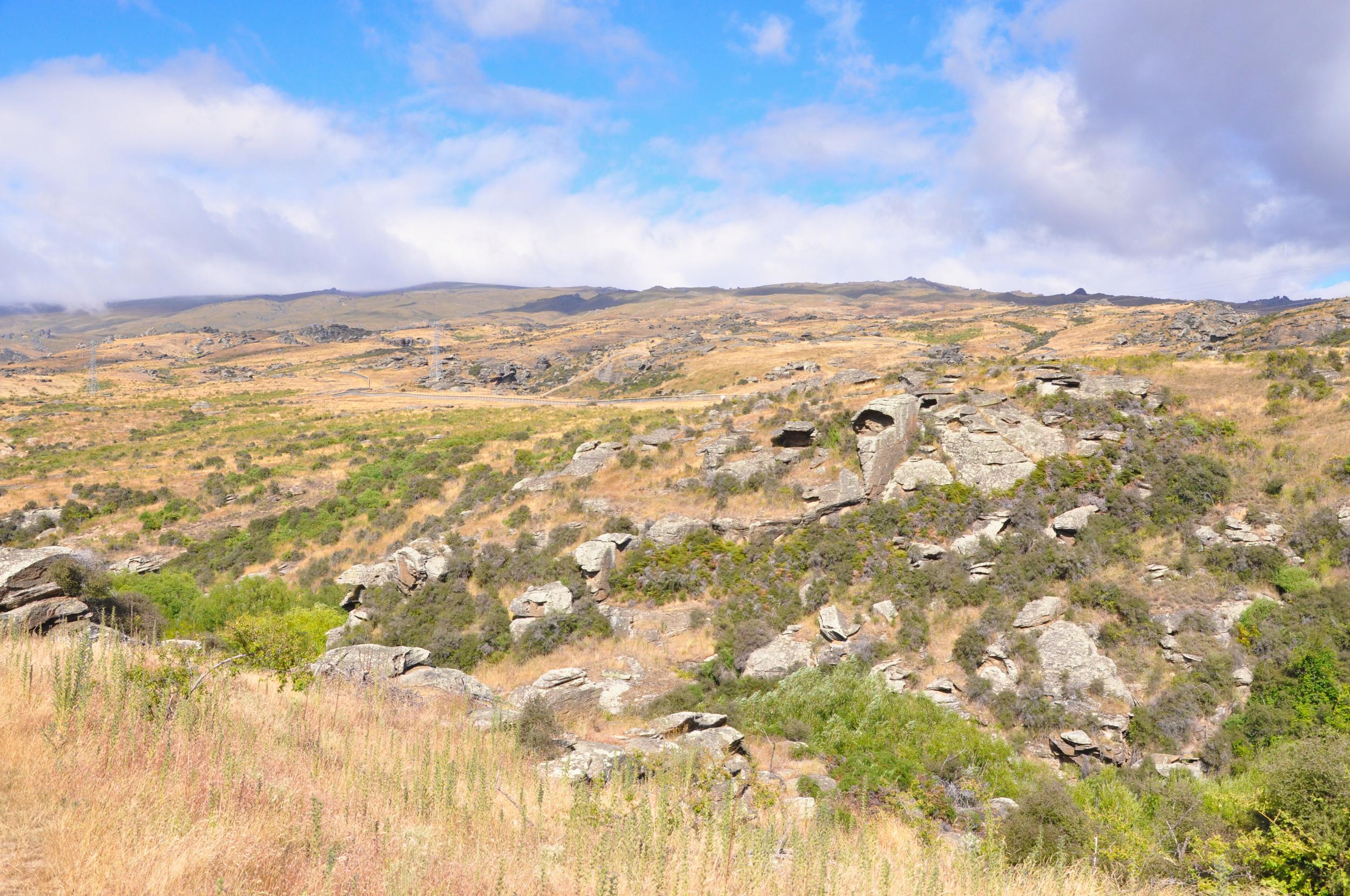
The fence was part of the Mokomoko Dryland Sanctuary, a community-led conservation project aimed at protecting the unique dryland habitat in the area and in particular the native Otago and Grand skinks. After an initial pilot study of 0.3 hectares, in 2015 fourteen hectares were fenced to help reestablish the natural habitat.

As with so many of the other places we had visited, the area was part of the early Central Otago Gold Rush. This valley was one of the earlier gold mining sites, with operations dating back to 1862. The hills and gullies were dotted with the remains of the mining claims including a few of the primitive shelters used by the miners.
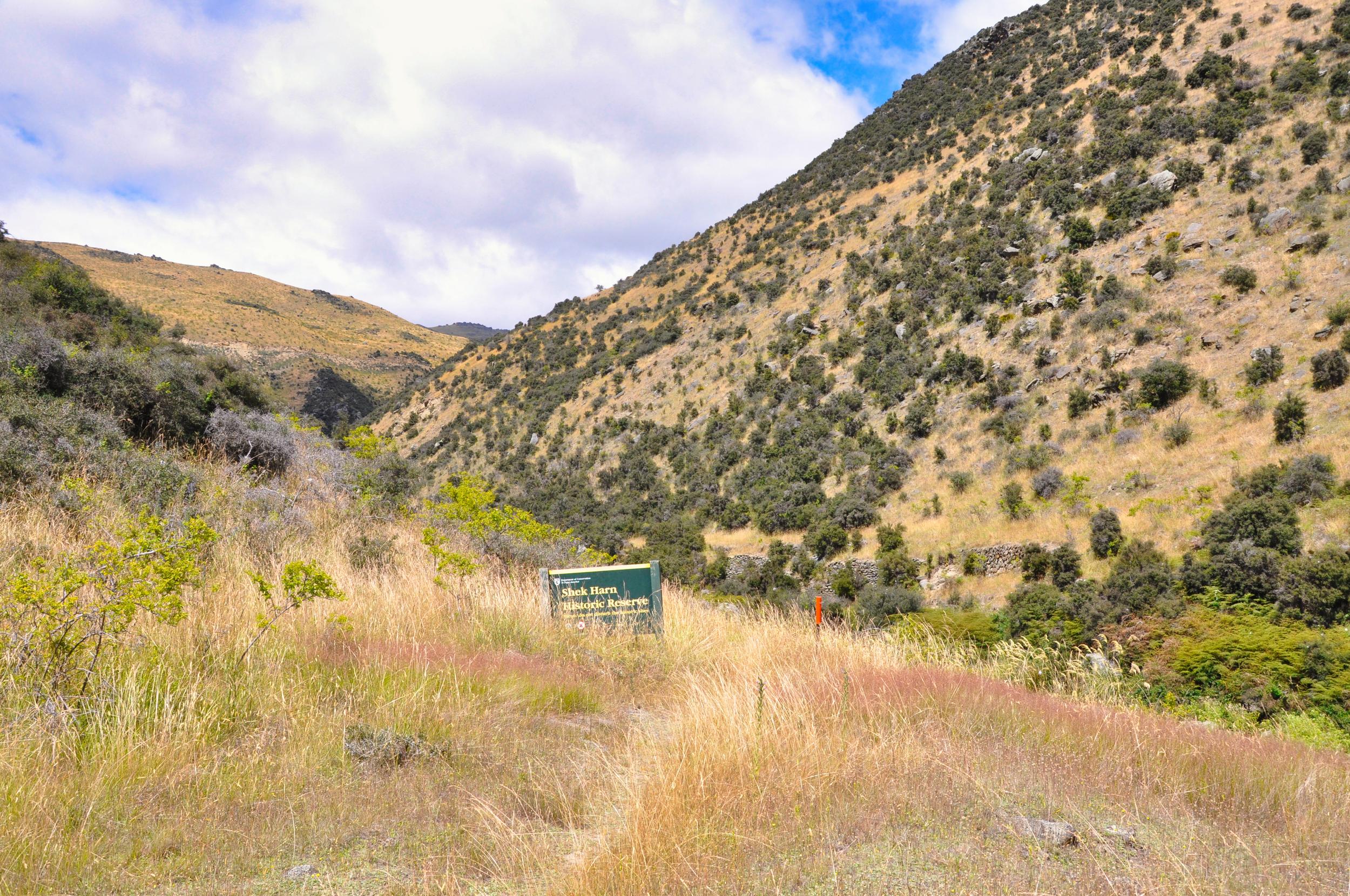
The final area we set out to explore was the Shek Harn historic reserve. As with the other areas we visited on this trip, we started out by heading to another water reservoir. Fraser Dam was a little more remote than some of the other places we visited and we bumped along a dirt track for quite a while before arriving at the lake which made for a perfect picnic spot.

After lunch we made our way up the Fraser Valley into the Shek Harn Historic Reserve. The track was a little tricky to find at times and we definitely got the impression we were the only ones that had ventured out this way in a while. Nevertheless we eventually came to the first of the historical hut ruins, likely constructed by the Chinese miners that worked this area. The name Shek Harn is Cantonese for ‘big stone ditch’ and we could certainly see remnants of old walls and other workings at what was part of the largest high-altitude gold field in Otago.

After checking out a few of the ruins, the track started to disappear again and so we took that as our cue to turn around and head back to the car. Driving back to civilisation still took us a while and you got a real appreciation for just how remote these claims were.
